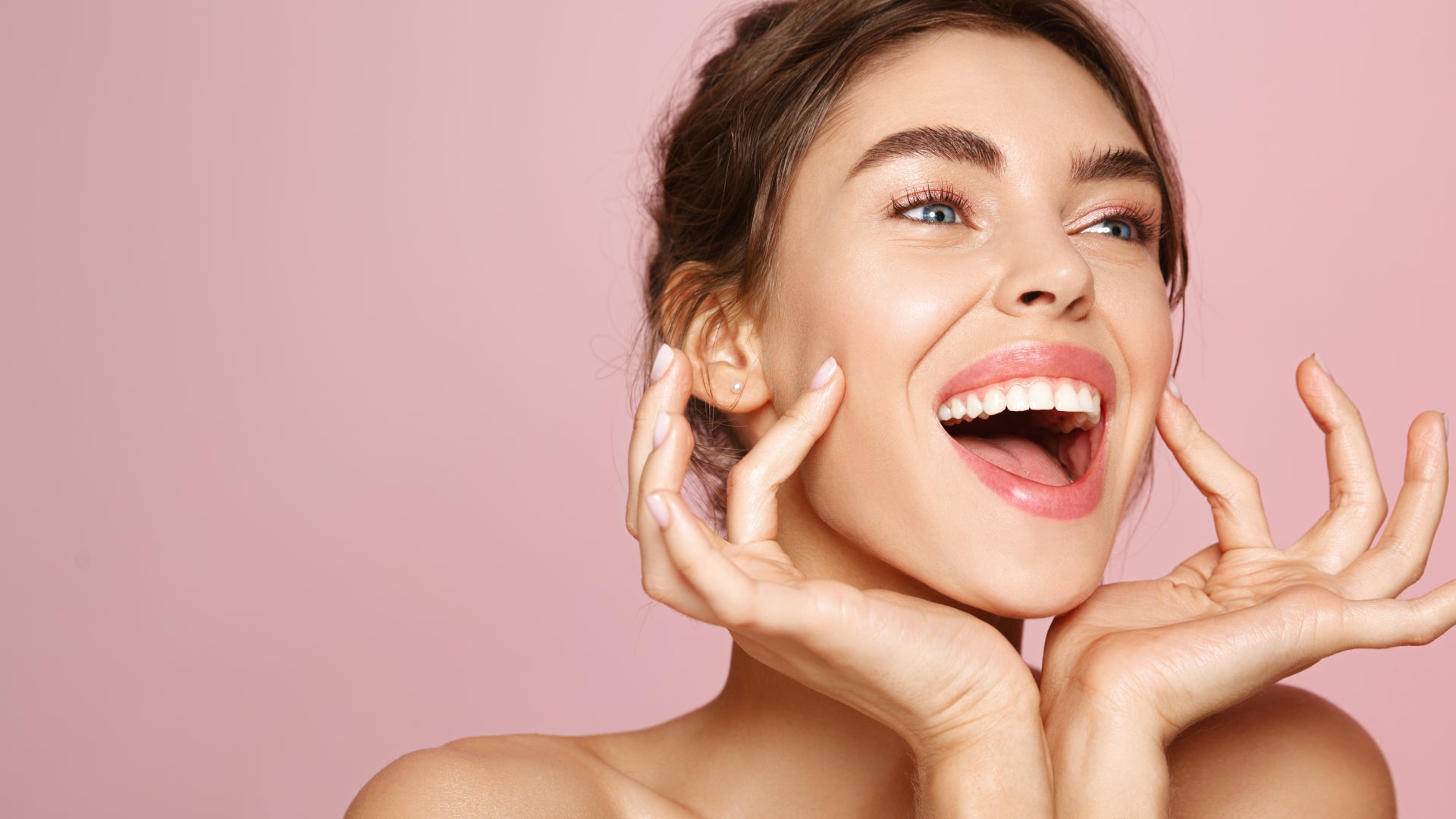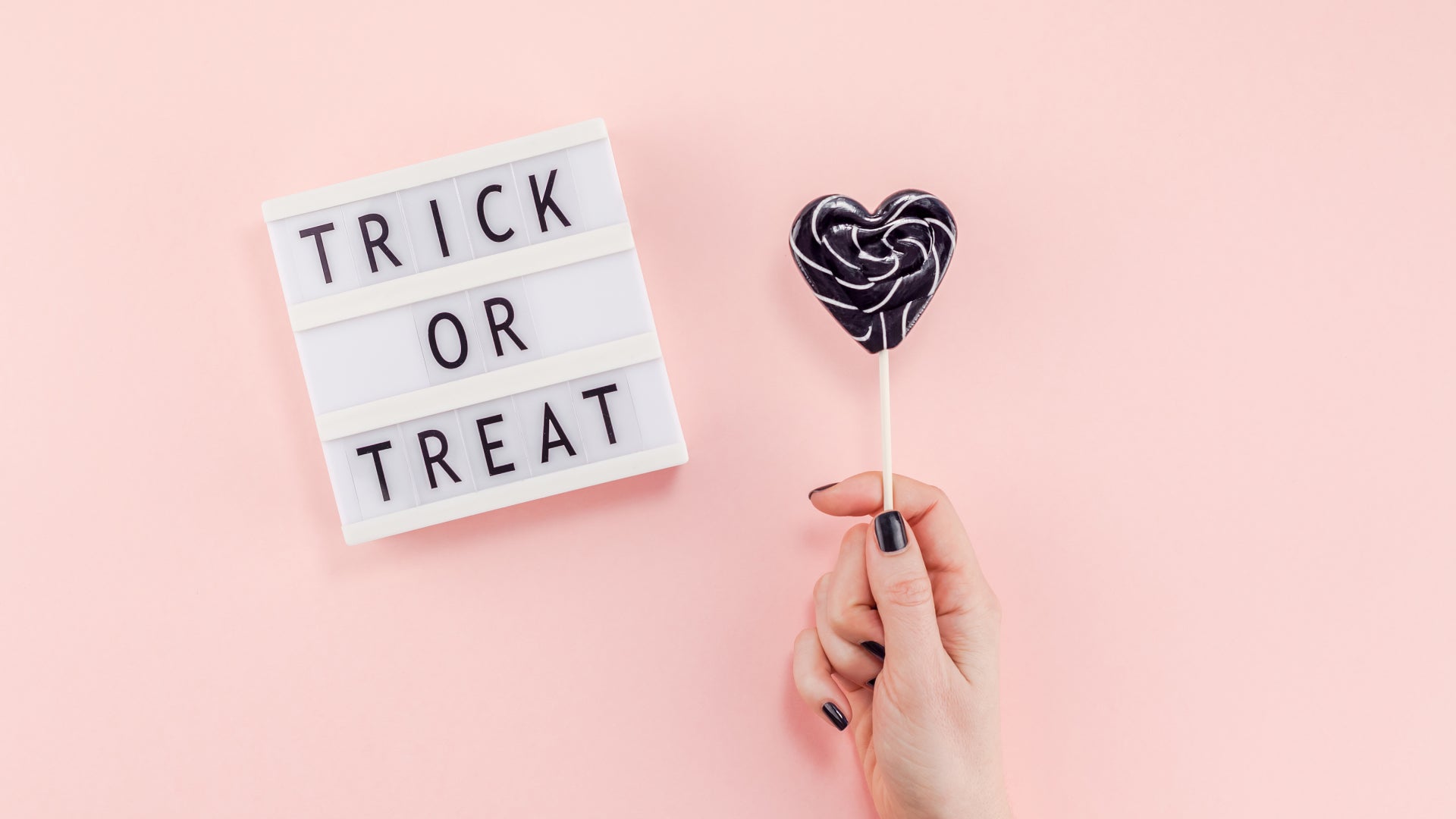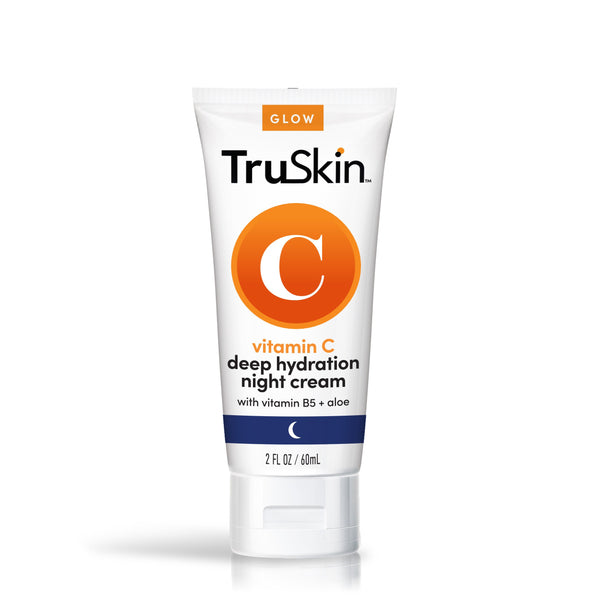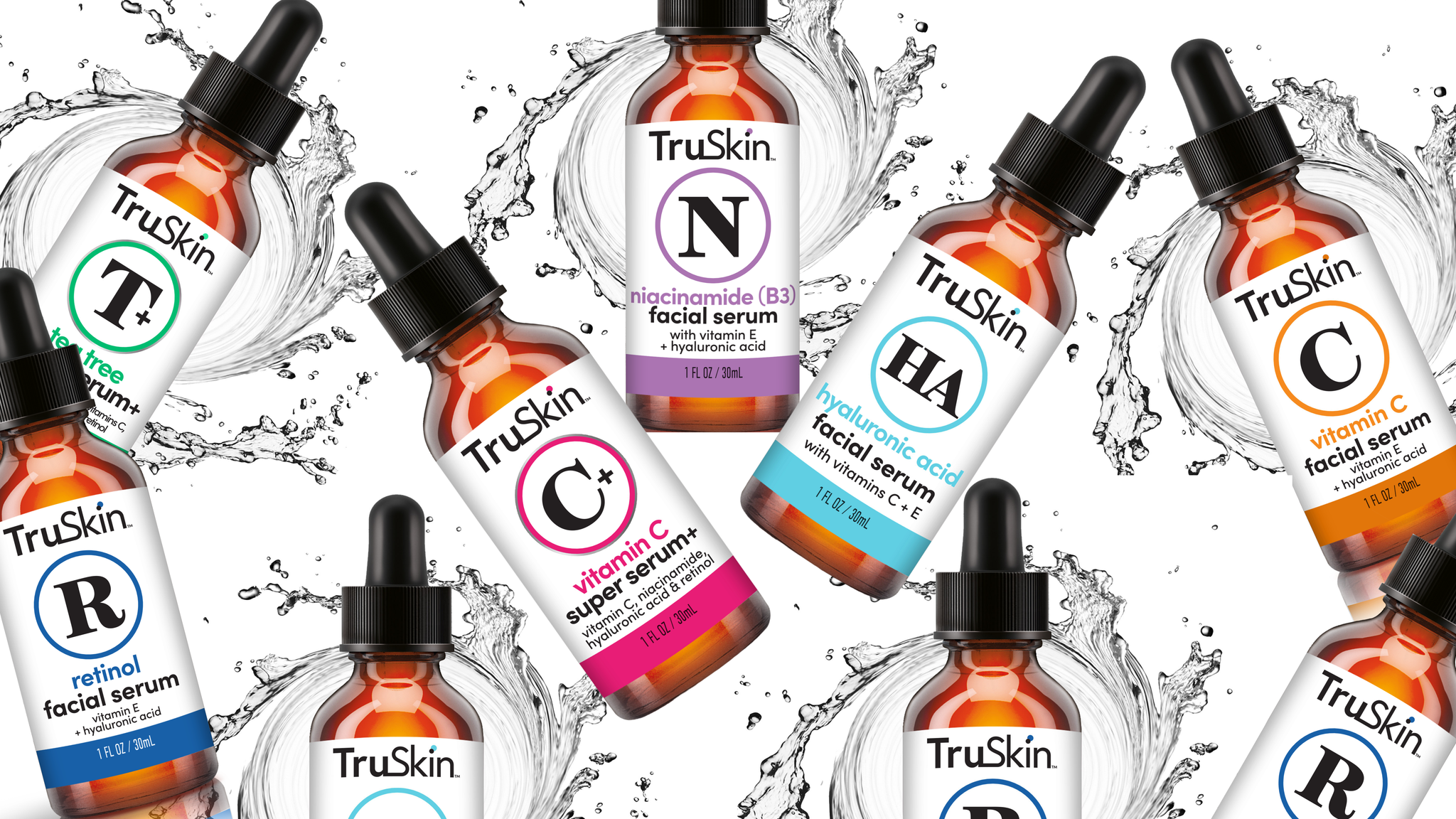
True Radical Honesty From Our Community
What To Do If You Hate Those Fine Lines Around Your Lips
Read MoreAdvice for all of your skin care needs
- all articles
- Acne
- Anti-Aging
- Collagen
- Combination Skin
- Company Announcements
- dry skin
- Exfoliation
- Eye Care
- Facial Redness
- Grooming
- Holidays
- Hyaluronic Acid
- Niacinamide
- Oily Skin
- Retinol
- Sensitive Skin
- Skincare
- Skincare Guide
- Skincare ingredients
- Skincare Routine
- Skincare Tips
- Sun Protection
- Toner
- Vegan Skincare
- Vitamin C
- view all
- Acne
- Anti-Aging
- Collagen
- Combination Skin
- Company Announcements
- dry skin
- Exfoliation
- Eye Care
- Facial Redness
- Grooming
- Holidays
- Hyaluronic Acid
- Niacinamide
- Oily Skin
- Retinol
- Sensitive Skin
- Skincare
- Skincare Guide
- Skincare ingredients
- Skincare Routine
- Skincare Tips
- Sun Protection
- Toner
- Vegan Skincare
- Vitamin C
-
Because breakouts are best dealt with over time with a combination of awesome skincare, healthy lifestyle choices and smart, professional treatments.
Did you know, around 40 to 50 million Americans have mild to severe acne? So, next time you look in the mirror and wonder ‘why me?’ just remember, you’re totally normal and not alone.
That being said, a positive mental attitude won’t magically banish your breakouts. Sure, confidence and self-assurance are everything and we’re big advocates of loving the skin you’re in… but if you’re serious about maintaining a clear, glowing complexion, you’re going to need more than good vibes alone.
You see, taking care of acne-prone skin is all about the long game. Shoving toothpaste on your zit the night before a big event might help, but it could also irritate and dry out your skin. Similarly picking and squeezing a custard-filled pimple the morning of a dinner date/holiday party/lunch with the girls will get rid of that pus, for sure, but it will also increase redness and inflammation, making your pimple hang around longer and possibly scar. Not cool.
So, instead, of freaking out about our acne spots and hitting the quick fix button – which invariably won’t work anyway – start a long-term plan right now with effective skincare and a little acne knowhow.
Below, our favorite long-term solutions for dealing with breakouts…
Fight Acne From Different Angles
According to the American Academy of Dermatology (AAD), one of the best ways to fight acne is to use different ingredients in your products to work on the different causes. Acne occurs when your pores gets clogged and inflamed thanks to a build-up of oils, dirt and bacteria. So, think about tailoring your skincare routine around these dealing with these little nasties.
Retinol, for example, works hard to reduce oiliness and improve cell turnover, while salicylic acid helps keep your pores clean and clear by accelerating the natural shedding of dead skin cells. Benzoyl peroxide, on the other hand, kills bacteria, while tea tree oil reduces inflammation and boosts healing.
Of course, we’d never suggest you throw all of these ingredients at your skin at once because overloading it with too many actives could worsen your acne and cause irritation. However, you could alternate between Retinol Facial Serum and a salicylic acid treatment, or you could try our awesome Tea Tree Serum two or three times a week. This facial serum combines a balanced blend of tea tree oil, salicylic acid and retinol to work on acne from all angles and offer a real improvement in acne-prone skin.
Give Your Skincare Regime Time To Work
Heads up, people: skincare products containing active ingredients that work on a deep cellular level do not work overnight. Far from it. In fact, they need at least four weeks to work to their best ability. And the reason for this is all down to the life cycle of the skin.
As you know, your skin is constantly regenerating itself, producing new cells within the deepest layers of your epidermis which mature as they work their way up to the surface where they die and shed. Well, this cycle takes around 28 days in an average adult – NOT that you’re average, of course;). Consequently, any product that changes the biological functioning of your skin will need at least the same amount of time (four weeks) to take effect and work on every cell that’s reached the surface.
Patience. It’s a virtue.
Avoid Pore-Clogging Skincare Products
Hiding your face behind heavy, pore-clogging makeup will undo all the hard work of an awesome skincare regime. So, don’t do that. Your best bet is to leave your skin free of makeup but if you hate facing the world without a little something, make sure all your products are oil-free, non-acnegenic and/or non-comedogenic. Non-comedogenic means a product has been formulated to be less likely to cause blocked pores (comedones). Note the words ‘less likely,’ however. This is not a guarantee they hands down won’t block your pores. But it’s a good start. Ingredients to avoid include things like cocoa butter, isopropyl myristate, soybean oil and lanolin acid.
Be A Clean Freak
Keeping your skin clean is really important so make sure you cleanse every morning, every night and always after exercising. Don’t rub too vigorously at your skin, however, and avoid products that could dry out your skin. Our Charcoal Clarifying Cleanser has been specifically formulated with activated coconut charcoal to gently draw pore-clogging debris from your skin to detoxify and help control acne. It also contains aloe, glycerin and essential oils to heal, hydrate and nourish your skin without blocking your pores or causing irritation.
Equally, anything that touches your skin must also be kept clean. Think pillowcases, face towels, your smartphone and especially your hands. Wash them all thoroughly and often.
Try Light Therapy
Fancy trying something at the derm’s office? Then ask your dermatologist about LED Light Therapy – especially if your regular skincare regime doesn’t seem to be doing the job. It works by emitting light deep into the skin and can be a very effective, non-invasive treatment to try. A combination of blue and red light is often used to treat acne because blue light kills bacteria while red light activates collagen production to promote healing and rejuvenation.
A series of multiple treatments is advised for the best results and of course, these results vary from person to person, so don’t expect miracles. Speak to your dermatologist first so they can give you an indication of what to expect. Who knows, they may even advise chemical peels or extraction as better options for your particular concerns? And remember, most professional treatments work better when combined with great, at-home skincare so don’t give up your salicylic acid and/or retinol regime.
Severe Acne? Ask Your Doctor For Help
If you feel like you’ve tried everything, ask your doctor about prescription-strength oral or topical medications. Anything from stronger retinoids and antiobiotics to oral contraceptives and steroid injections have been proven to help clear up even the most severe cases of acne. The options are almost endless, so don't lose hope, people – there's bound to be something out there for you.
Long-Term Acne Solutions That Get The Job Done
read more -
Halloween’s always a great excuse to scoff candy, but processed sugar can have dire effects on your skin…
Stuffing mealtimes with vitamins, minerals, antioxidants and good fats goes a long way to maintaining glowing, healthy skin. But treating your body like a temple is easier said than done when all the naughty stuff tastes so darn good.
Well, do you know what? A little of the bad stuff is not going to do that much damage in the long run. It’s all about everything in moderation, right? Ha, moderation! That’s all well and good throughout most of the year, but there are certain times when temptation is just too hard to resist. And Halloween is one of them.
From candy corn and Reese’s Peanut Butter Cups to ghoulishly decorated cupcakes and super sweet cocktails, there is literally no getting away from sugar at this time of year. Even when October 31 has passed, Thanksgiving is just around the corner, then the holidays and, well, you might as well right off the entire rest of the year because your willpower stands zero chance against all of that sweet stuff.
But here’s the thing, while a little sugar is fine, overloading your body with tons of processed sugar is hell on your skin and can lead to inflammation, premature aging, even pimples and blackheads. Not down with that? Then here’s everything you need to know about the disastrous effects excess sugar has on your poor complexion. And hopefully a little intel will make you think twice about living by the ‘one for them, one for me’ rule next time those trick or treaters come knocking on your door…
Why Sugar Is Bad News For Your Skin
Studies show that overloading your body with sugar accelerates the accumulation of advanced glycation end products (AGEs) through a process called glycation. Glycation is a reaction that occurs when excessive amounts of sugar become too much for your natural insulin levels to handle. It then attacks your skin cells, latching onto fats and important proteins like collagen and elastin, breaking them down and causing them to stiffen, weaken and performing poorly. The result? Harmful compounds called AGEs that kill your radiant, youthful complexion by causing dryness, exacerbating fine lines, deepening wrinkles and making your skin look kind of ‘meh.’
But that’s not all. Sugar is also an inflammatory, so not only does it play a huge part in the speed in which your skin ages, but it can also be a major trigger for acne, eczema, rosacea and psoriasis flare-ups. Especially if you like to overindulge on the reg.
How To Cut Down On Your Sugar Intake
Did you know, the average American consumes about 17 teaspoons of sugar every day – and who knows how much that spikes over Halloween and the holiday season? So, try to remember, Halloween candy should ideally be for the kids, not you! You probably wouldn’t give the likes of Skittles, M&Ms and Hershey’s Kisses a second look throughout the rest of the year, so just because they’re in the house now, this doesn’t mean you should scoff the lot.
A great tip is not to buy your trick or treat stash until the last minute – preferably the day of Halloween – then temptation won’t get in the way. And if you have leftovers you don’t know what to do with? Give them to a neighbor or take them to work so they’re well out of temptation’s reach.
When it comes to your regular, day-to-day eating habits, avoid adding extra sugar to your food and drinks, and limit packaged, processed foods that contain hidden sugars like corn syrup, fructose, molasses and invert sugar. Make small changes like replacing cookies and ice cream with fresh fruit and unsweetened yogurt, and swap sugary cereals for unsweetened oatmeal or granola. Simple tweaks like these won’t be too painful to stick to, but can make the world of difference to the look and feel of your skin.
5 Ways To Counteract The Negative Effects Of Sugar On Your Skin
Great skincare is also essential if you want to stop sugar from doing a real number on your complexion. Here are our top five ways to beat ‘sugar face.’
1. Load Up On Antioxidants
Pesky AGEs are a real killer on your body’s antioxidant system, deactivating your natural enzymes which work hard to fight against free radicals and all the damage they cause to your skin. To combat premature aging and limit oxidative stress, up your topical antioxidants. Vitamins A, C and E are fabulous antioxidants for your skin, as are niacinamide and hyaluronic acid. Not sure which to choose? Then you can’t go wrong with our fan-favorite, Vitamin C Serum For Face.
2. Up Your Intake Of Alpha-Lipoic Acid
Alpha-lipoic acid (ALA) is another antioxidant that helps protect your skin from free radical damage. It’s also an anti-inflammatory and, according to Diabetes Action, has been shown to help reduce levels of sugar and lipids in the blood by reducing oxidative stress and inflammation. ALA is found in spinach, broccoli, tomatoes, beets, carrots and red meat, but you can also find it in dietary supplements.
3. Get Plenty Of Zzzs
Your body does most of its damage limitation overnight while you’re catching valuable zzzs, so don’t underestimate the power of a good night’s sleep for reducing the aging effects of glycation. Studies show that the sleep hormone, melatonin can reduce damage caused by glycation by up to 50 percent. Sleep also helps curb inflammation and regulates your blood sugar levels to reduce sugar cravings throughout the day. Win win.
4. Use Anti-Inflammatory Skincare
Skincare that reduces redness and inflammation is perfect for anyone with a sweet tooth. And our favorite, anti-inflammatory go-to? MSM. Otherwise known as methylsulfonylmethane, MSM is a sulfur compound that helps increase your body’s natural production of glutathione, a super important antioxidant that works hard to boost collagen, quash environmental damage and fight inflammation. Try Vitamin C Super Serum+ to get your daily fill of MSM.
5. Reduce Your Levels Of Stress
Stress is bad news on so many levels, not least of all its effects on a post sugar high complexion. How so? Because, for one thing it causes spikes in cortisol, which accelerates glycation, increases inflammation, mucks up your collagen and interferes with healing. It can also affect sebum production, making dry skin drier and oily skin even oilier. Try to manage your stress by taking some time for yourself at least once a day. Read a book, go for a walk or take a bath – in fact, anything that helps clear your mind of the daily grind will go a long way to improving your skin – and, of course, your well being.
The Frightening Effects Of Sugar On Your Skin
read more -
Nature provides us with some of the most effective skincare ingredients around, but oftentimes complicated-sounding ingredients are just as good (if not better) for your skin. As long as you choose the correct ones, of course…
We pride ourselves on harnessing the power of nature’s finest ingredients as much as possible – using plant-based actives, wildcrafted extracts and essential oils across all of our skincare formulations.
However, not everything in nature is always good for your skin (cough, poison oak). Some ingredients like peppermint and lemon oils can be terribly harsh when applied to your skin and may cause redness, itching and dryness – especially if it errs on the sensitive side. So, don’t be fooled, nature is awesome, for sure, but not everything in nature is awesome for your skin.
In the exact same way, not all synthetic ingredients are bad. We’re proud to say our products avoid all the big nasties, such as parabens, sulfates, and phthalates, but we’re not 100 percent natural because we believe the best kind of skincare comes from a clever combination of both nature and science.
On that note, here are five ingredients that sound pretty scary… but really aren't. How do we know? Because we use them across many of our formulations and we’d never knowingly put anything into our products that could harm your skin. You're welcome.
1. Cetyl & Stearyl Alcohol
Some skincare brands would have you believe that all alcohol in skincare is bad. Not so. For starters, there are a gazillion different types of alcohol and not all of them sting or dry out your skin. Low-molecular-weight alcohols like denatured alcohol (alcohol denat) are the ones to be aware of. Alcohol denat functions as a solvent and is largely used to improve texture and encourage other ingredients in a product to be better absorbed by your skin. Basically, it makes a product feel nice. However, its naughty side far outweighs its nice side. Alcohol denat is extremely irritating and unbalancing because it draws out your natural oils, causing excessive dryness for many people, but also making oily skin even oilier as it tries to overcompensate for what’s been stripped away.
Best avoided.
On the flipside, high-molecular-weight alcohols like cetyl and stearyl alcohols are actually very skin-friendly. Also known as fatty alcohols, these are added to many skincare formulations to stop oil-and-water from separating. By stabilizing oil and water they give products a much smoother texture which allows them to glide over your skin way better.
Unlike alcohol denat which has the opposite effect, fatty alcohols help keep your skin moisturized because they have emollient properties which fill in cracks on the surface of your skin. They also leave a light oily seal to soften your skin, reduce irritation and decrease transepidermal water loss (TEWL).
We believe in cetyl alcohol so much, it's blended into all three of our Retinol and Vitamin C moisturizers.
2. Xanthan Gum
Xanthan gum doesn’t sound much fun at all, but this polysaccharide not only has zero negative effects on the skin, but it might actually be quite good for it.
Often derived from corn, soy, wheat or dairy, xanthan gum is a naturally derived ingredient that’s frequently used as a thickener or binding agent in kitchen ingredients such as sauces, salad dressings and almond milk. When it comes to your skincare products xanthan gum is used for similar reasons – to bind ingredients together – but it also helps products glide over your skin more easily and effectively.
Full disclosure: xanthan gum definitely benefits the texture and feel of your product more than your skin itself, but due to it being derived from sugar, many experts believe it to have hydrating properties when applied topically. We’ll take that. Find it in Niacinamide Facial Serum among others.
3. Methylsulfonylmethane
Methane? On your skin? No. Way. Actually, stop right there because methylsulfonylmethane is downright awesome as a skincare ingredient. Known as MSM to friends (that includes you) this organic sulfur compound works hard to neutralize free radical damage caused by things like pollution, the sun and cigarette smoke. It does this by boosting your natural levels of glutathione, one of your body’s most important, naturally-occurring antioxidants.
MSM also has plenty of other things going for it. It’s anti-inflammatory so helps reduce inflammation caused by the usual suspects of stress, no sleep and a diet packed with sugar and carbs. Oh, and it’s also been proven to help strengthen and promote collagen production to visibly reduce the appearance of lines, wrinkles, dark spots and sagging skin. Definitely a keeper.
You’ll find MSM in plenty of your TruSkin favorites, including Vitamin C Brightening Cleanser and our awesome Hyaluronic Acid Eye Cream.
4. Palmitates
Sure, ethyhexyl, cetyl and isopopropyl palmitates are tricky to spell and a bit of a mouthful, but we’re big fans.
Produced from a naturally occurring fatty acid called palmitic acid, palmitates are similar to fatty alcohols in that they come under the umbrella of emollients. Emollients are types of ingredients (whether natural or synthetic) that soften and moisturize dry skin by filling in and repairing cracks on the surface. This not only helps up your levels of lipids to reduce dryness and flaking, but it also works hard to prevent water loss and keep your skin healthy, hydrated and free from irritation. Check out our awesome moisturizers to get your fill of super effective palmitates.
5. Phenoxyethanol
Finally, we have phenoxyethanol. This synthetic preservative has received a lot of bad press over the years, but it’s backed by decades of clinical research and is used in extremely small concentrations (no more than 1 percent) in skincare to prevent products from spoiling or losing efficacy. Compared to many other preservatives, phenoxyethanol is way less likely to sensitize your skin or cause any kind of allergic reaction and is much more favorable to parabens.
One particular study also points to phenoxyethanol offering potential benefits to acne-prone skin, possibly improving pimples and reducing inflammation. But the jury’s still out on that one. In the meantime, think of it as an essential and safe way for you to maximize your skincare products, helping them last longer and maintain their potency to give you the best results.
We use phenoxyethanol in most of our active serums, including Tea Tree Super Serum +.
To conclude, all we can say is don't be afraid of complicated-sounding ingredients on your skincare labels; some of them are awesome for your skin. Just do your research, because others definitely have the potential to be as scary as they sound. For a list of some of the most harmful ingredients to avoid, check out our toxic skincare round-up, here.
Scary-Sounding Skincare Ingredients That Are Surprisingly Good For Your Skin
read more -
Turns out, vitamin C really IS the bright stuff.
Summer’s gone and fall is in full swing. Now, we have nothing against this time of the year (falling leaves, indoor fires, red wine Sundays, bliss) but isn’t it annoying when your skin lacks that certain glow it seemed to naturally emanate when the sun was out in full force? And we’re not talking about craving super tan skin that, in all honesty, has been damaged by the sun and will age you up faster than you can say ‘pass the SPF.’ No, we mean the feeling and look your skin has when that warm light is just right. You know where we’re coming from, yes?
Well, just because the days are getting grayer, this doesn’t mean your skin has to follow suit. And neither do you need to spend an extra hour on your skincare routine morning and night just to get your glow on. As it happens, just one ingredient can give your skin the natural radiance it deserves.
Say hello to vitamin C.
Otherwise known as l-ascorbic acid, topical vitamin C is a super potent skincare ingredient that works hard to protect, brighten, strengthen and rejuvenate a tired, dull complexion. It often gets a bad rap by skincare cynics because pure vitamin C is a tricky customer when you apply it to your skin. It can be a tad powerful for some skin types, is highly acidic and it breaks down easily on contact with your skin. Not great news, in case you were wondering.
So, why do we rate it so much? Because, l-ascorbic acid isn't the only vitamin C option available. In fact, there are some awesome derivatives such as sodium ascorbyl phosphate (SAP) which are infinitely more superior than the pure stuff. SAP is a salt version of pure vitamin C and much gentler (but no less effective in the long-term) on your skin. It’s also more stable when it comes into contact with light, air and water which helps it maintain its potency for way longer. Ever wondered why our vitamin C products look a little cloudy? Well, this is due to the salty nature of SAP – kind of like when salt is dissolved in water. Light bulb moment.
 So, how exactly does vitamin C work when it comes to brightening your skin and giving you that gorgeous, glowy feeling? Buckle up, here’s the science bit…
So, how exactly does vitamin C work when it comes to brightening your skin and giving you that gorgeous, glowy feeling? Buckle up, here’s the science bit…1. Vitamin C Is A Powerful Antioxidant
Just like vitamin E, retinol and hyaluronic acid, vitamin C is a potent antioxidant. Antioxidants are super important for the look, feel and health of your skin because they fight free radicals which are created in your skin thanks to external lifestyle and environmental triggers like smoking, alcohol, pollution and exposure to the sun. When free radicals form in the skin, they do a real number on important proteins, DNA and fatty acids, causing all manner of damage which shows up on the surface of your skin by way of lines, wrinkles, dark spots, poor texture, uneven skin tone and sagging.
Thankfully, antioxidants are your life-saving Batman to those free radicals' evil Joker: battling away to stop their onslaught of harm to your skin. And as long as you include plenty of antioxidants in your diet and your skincare, you should come out on top.
As antioxidants go, vitamin C is one of the most well-studied and proven in terms of visible effects on your skin and, according to experts, applying it topically can be 20 times more potent than taking it orally.
2. Vitamin C Inhibits Melanin Production
More good news: vitamin C is not a one-trick pony in its bid to help you achieve a brighter complexion. As well as its ability to quash free radical damage (otherwise known as oxidative stress), vitamin C also inhibits melanin synthesis by decreasing the production of an enzyme called tyrosinase.
Bear with us for a second while we get a little technical.
As you know, melanin is the pigment that gives your skin its unique color. Same for your eyes and hair. When you’re exposed to the sun, melanin production ramps up in a bid to protect your skin against UV damage. This makes your skin look darker and tan. However, melanin production can also go awry, causing your skin to become patchy and uneven-looking. These dark or sun spots are a type of hyperpigmentation called solar lentigines.
Now, back to tyrosinase.
Tyrosinase is an enzyme that catalyzes the production of melanin, so by interfering with tyrosinase production, topical vitamin C simultaneously hampers the amount of melanin in your skin, therefore helping to fade existing dark spots AND reducing the likelihood of you developing new ones.
We told you it was good stuff.
3. Vitamin C Acts Like A Mild Exfoliator
Vitamin C doesn’t exfoliate your skin in the traditional way like scrubs or alpha hydroxy acids. However, it does promote cell turnover which has a similar end result.
Skin has a natural way of shedding, a process called desquamation. On average, the life cycle of an adult skin cell is around 28 days, in which time it forms, matures, dies and sheds. As you get older, however, this life cycle becomes sluggish, often slowing down to as much as 90 days as you reach your 60s. The result is that skin starts to look less radiant – because dead skin cells don't shed as easily, causing dullness and a tired-looking complexion.
This is why boosting cell turnover through ingredients like retinol and vitamin C, or exfoliation techniques like facial scrubs and AHAs is so important as you get older and skin becomes less vibrant and youthful-looking.
How To Embrace Vitamin C In Skincare
To benefit most from the glow-inducing powers of vitamin C, a facial serum is 100 percent the way to go. Facial serums have a small molecular structure which allows them to deliver ingredients to your skin way quicker and much more effectively than other skincare formulations. And that’s a scientific fact.
Because we love vitamin C so much, four of our six serums contain SAP, our favorite form of vitamin C. Of course, if you’re a purist, you can’t go wrong with the momma of the C-gang, our original and best-selling Vitamin C Serum For Face. This fan favorite and current holder of almost 90,000 ratings on Amazon combines vitamin C with vitamin E and hyaluronic acid to help you reinstate the radiance you deserve. Shout out also to our awesome Vitamin C Super Serum+ which combines vitamin C with retinol to hit the signs of aging where it hurts.
Check out our full range of facial serums and skin care kits, right here.
 We also formulate vitamin C into our Brightening Cleanser, Brightening Moisturizer and Deep Hydration Night Cream, so you really can take it up a notch and go for it across your whole regime if that’s your skincare jam.
We also formulate vitamin C into our Brightening Cleanser, Brightening Moisturizer and Deep Hydration Night Cream, so you really can take it up a notch and go for it across your whole regime if that’s your skincare jam.Just remember, always patch test any new product when you first try it out. SAP is very well tolerated, but like most active ingredients, it’s pretty powerful and isn’t for everyone. Always try a small amount on a discreet area of skin and leave it for 48 hours to test for a reaction before using it on your whole face. And we don’t just say this for fun: it’s important, OK?
Now, get glowing, you beautiful people.
Why Vitamin C Is The Answer To A Year-Long Summer Glow
read more -
What can you do to counteract dry skin and the flakiness, itching and irritation that often comes as part of the package? Well, we believe what you put on your skin can make a real, difference…
If you have dry skin you’ll know that finding an awesome moisturizer is like discovering your perfect hairdresser. A veritable ‘eureka moment.' But not an easy one to accomplish, that’s for sure. So, why is this the case? Well, it’s confusing business. Firstly, skincare ingredients come and go thanks to technology, trends and the opinions of influencers and A-listers. Remember when snail slime was the future of ageless skin? Yeah, it didn’t last. Also, dry skin can be sensitive to certain ingredients, taking umbrage to the likes of synthetic fragrances, sulfates, parabens and the like, making it hard to find products that don't make your skin sting or become irritated.
This is why we believe it’s super important to know which ingredients to look out for when moisturizing dry skin. Not the fleeting ones that don’t stand the test of time (here's looking at you again, snail slime), but the tried, tested and trusted ingredients that derms have been recommending for decades. Because a) they work and b) well, they work.
But first things first, let’s talk about dry skin…
What Is Dry Skin?
Dry skin, dehydrated skin: same difference, right? Wrong. Dehydrated skin is a temporary condition that any skin type (yes, even oily) can experience and occurs when skin is lacking in water. Dry skin, however, is a whole other ball game. Dry skin is a true skin type like oily, combination and the elusive ‘normal’ skin and it means your skin is lacking in natural oils, NOT water. This dryness is likely to affect your entire body and it’s something you’re born with and will live with your whole life. Sure, it may improve or worsen depending on things like the season, your age or the time of the month, and yes, you can relieve dryness with great skincare products, but all in all, dry skin is for life.
How To Moisturize Dry Skin
Let’s get one thing straight, moisturizing ingredients and hydrating ingredients are not one and the same. Hydrating ingredients add water (hydration) to your skin and include the likes of hyaluronic acid, glycerin and aloe vera, whereas moisturizing ingredients are those that lock water into the skin by providing a protective layer on the surface to help prevent transepidermal water loss (TEWL). Moisturizing ingredients are the most important for dry skin types, but often dryness and dehydration come hand in hand, so a great skincare kit should always include a combination of both.
Today, however, we’re concentrating on the best moisturizing ingredients. And in no particular order, here are our top five…
1. Ceramides
Ceramides are fatty acids that make up around 50 percent of your skin’s composition and are found in the skin’s protective barrier, the stratum corneum. Ceramides are super important to the health of your skin because they act like glue to hold your skin cells together, keeping moisture in and irritants out. Kind of like your body’s own natural moisturizer. Of course, like many good things in life, you lose ceramides as you age. Your levels also take a hit from things like cold, dry air; a poor diet and harsh skincare products that strip your skin of oils.
This is why ceramides are up there as some of, if not the most important ingredients for strengthening your skin’s barrier function and simultaneously moisturizing dry skin.
2. Palmitates
Just because ingredients like ethyhexyl, cetyl and ispopropyl palmitate are tricky to pronounce (and even harder to spell!), this doesn’t make them the bad guys. Far from it. In fact, these palmitates are extremely useful for treating and conditioning dry skin. They come under the umbrella of emollients which are types of ingredients (whether natural or synthetic) that soften and moisturize dry skin by filling in and repairing cracks on the surface to help prevent water loss and keep your skin healthy and free from irritation. Not to be sniffed at, people.
3. Plant Oils
We’re major fans of botanical oils like coconut, jojoba and sunflower for their natural ability to work wonders on all skin types. Like palmitates, they’re super effective emollients, but some oils also have occlusive properties which is an absolute must for dry skin.
Occlusives work by leaving a thin coating on the top layer of your skin which traps in water and other hydrating ingredients, so your skin can make the most of all that moisture and nourishment all day long. Rich oils like coconut and olive can feel a little heavy if you have oily or acne-prone skin. However, they’re awesome for dry or irritated skin whose barrier function needs a little helping hand.
Plant oils are also rich in nutrients and antioxidants, so they’re great for protecting your skin from oxidative stress while strengthening and repairing your skin. Big win.
4. Shea Butter
As butters go, shea is top of the class.
Shea butter is a fat that’s extracted from the nut of the African shea (or karite) tree. Not only is it rich in fatty acids like stearic, oleic and lineoleic which gives it outstanding emollient powers, but shea butter is also an anti-inflammatory making it a beauty for healing a compromised barrier function.
Unlike cocoa butter which can be too rich for some skin types – especially on the face – shea butter is light, easily absorbed and non-comedogenic which means it’s less likely to clog your pores and cause breakouts. But don’t think this makes it any less effective when it comes to moisturizing dry skin. Shea butter is a real winner and is also packed with vitamins and anti-inflammatory compounds to further repair damaged skin. It's so good, it may even help soothe and treat eczema.
5. Vitamin E
Often seen on skincare labels as tocopherol, tocopheryl acetate or alpha-tocopheryl acetate, vitamin E is one of our favorite ingredients and up there with the likes of vitamin C and retinol as a must for any successful regime. Why is it so great for dry skin? Well, it’s an anti-inflammatory and an antioxidant so helps repair, soothe, protect and heal the skin’s delicate barrier function. But what’s most impressive is that it has a smart way of combining both humectant and emollient qualities all into one. This means it can draw water into your skin like a sponge, AND hold it there. Some experts believe it has the ability to retain moisture for up to 16 whole hours. Wowza.
An oldie, but a real goodie.
5 Ingredients Dry Skin Can’t Live Without
read more -
Summer’s officially over, folks. So, there’s no better time to add a hard-working face serum into your skincare routine. Frankly, it would be rude not to.
Face serums are mysterious little characters. Often moisturizing, but not really moisturizers; sometimes oily, but definitely not face oils. Mind. Officially. Blown.
But the thing is, a face serum is probably the most important and hard-working product you could have in your skincare arsenal. Sure, it’s not 100 percent vital in terms of keeping your skin clean, moisturized and protected from the sun (they’re the absolute basics for healthy skin, btw). However, if you want to do more than just the bare minimum for your skin and want to keep it looking its best for as long as possible, you simply must include at least one serum in your daily regime.
Not sure where to start? Then allow us to fill you in on all the essential deets. Because summer’s gone, fall’s here and now’s the perfect time to up your skincare game.
What Are Face Serums?
A face serum is a light, water- or gel-based skincare product that’s been formulated to help treat specific concerns or skin conditions like dullness, dehydration or aging. Due to their small, molecular makeup, serums are extremely fast-absorbing and can penetrate deep into your skin. This is why they’re such a great tool for delivering active ingredients exactly where your skin needs them.
How Do Serums Differ To Moisturizers?
Unlike serum, a moisturizer’s main job is to, well, moisturize. Sure, it might contain antioxidants, exfoliating acids and all manner of other skin-loving ingredients as added extras but at the end of the day, a moisturizer’s ability to moisturize your skin is everything. A moisturizer, therefore, is richer than serum and usually contains some kind of emollient or occlusive ingredient (think shea butter, jojoba oil, coconut oil etc.) to create a barrier and stop moisture from escaping from the surface of your skin.
Serums, on the other hand, are lighter and contain much smaller molecules than their moisturizing cousins. Of course, serums can contain hydrating ingredients to help your skin retain moisture, but they don’t often contain occlusive or emollient ingredients (think shea butter, coconut oil etc) which form a seal on the surface of your skin. If they did, they wouldn’t retain such a lightweight composition and they wouldn’t absorb into your skin in such a timely, effective manner.
Is A Face Serum Right For Me?
Probably… but who knows? There are so many different formulations around, there’s bound to be one to suit your needs. However, the most important thing is to always patch test any new serum before applying it all over your face and neck for the first time.
To perform a patch test, apply a small amount to a discreet area of clean skin either behind your ears, inside your elbow, on your wrist or on the side of your neck. Then leave it for a good 48 hours to check for any negative reactions. If everything’s a-okay after this time, you’re good to go. Even mild reactions such as redness or a little tingling that settles down after an hour is fine – this is just those awesome ingredients getting to work. However, anything that’s continually uncomfortable or painful is a major red flag. If you experience a bad reaction like this, immediately cleanse your skin and don’t use it again. And if symptoms continue to get worse, always seek advice from a skincare expert.
How Do I Choose A Serum To Suit My Skin Concerns?
Most formulations will feel similarly lightweight and watery or gel-like, so that’s not really a factor. Instead, it’s all about those active ingredients inside.
Here are five awesome ingredients to look out for in a face serum, depending on your skin’s concerns:
1. Hyaluronic Acid
Great For: All skin types.
Hyaluronic acid is one of the best ingredients for hydrating your skin. It’s known as a humectant which means it works like a sponge to draw water to the surface of your skin.2. Retinol
Great For: Aging or acne-prone skin.
Retinol is seen as the best of the best when it comes to boosting cell turnover and therefore working on everything from fine lines and wrinkles through to dark spots and pimples.3. Vitamin C
Great For: Dull skin.
One of the most studied antioxidant in skincare, vitamin C protects your skin from free radical damage and inhibits melanin production to boost your skin’s glow factor and improve hyperpigmentation.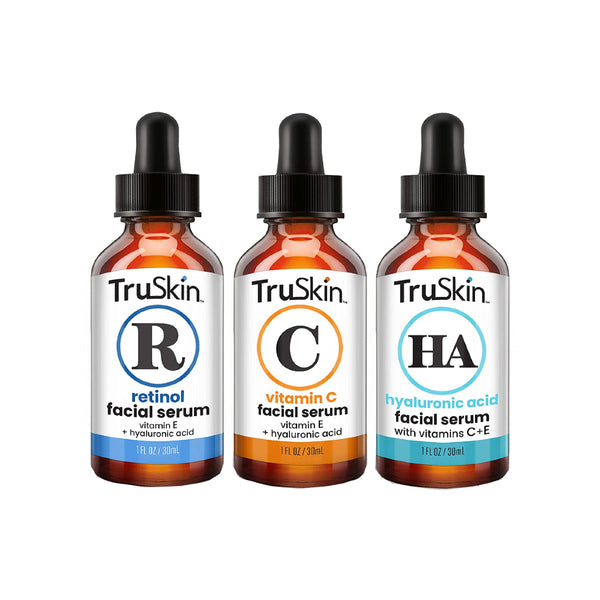 4. Niacinamide
4. Niacinamide
Great For: All skin types, particularly sensitive.
Otherwise known as vitamin B3, niacinamide is a gentle, but effective antioxidant. It works really well with the natural substances in your skin to improve tone, texture and the visible signs of aging.5. Salicylic Acid
Great For: Oily or combination skin.
Salicylic acid is an oil-soluble chemical exfoliator that gets deep into your pores to reduce excess sebum, reduce acne breakouts and boost cell turnover.How & When Should I Apply My Face Serum?
The general rule with skincare is that lighter products should always be applied first so they don’t have to fight with the heavies to reach the surface of your skin. This means, therefore, that serum should always be applied before moisturizer, to cleansed, toned skin. Then you can follow with a face oil and finally, that all-important, never-to-be-forgotten sunscreen (in the morning, of course!).
When it comes to your application technique, NEVER place the serum dropper directly onto your face as this can transfer oil and bacteria from your skin straight back into the bottle. Instead, apply one or two drops of serum onto clean hands, then apply it over your face and neck. Pat it gently all over cleansed skin and don’t worry about massaging it in. This is totally unnecessary. Serums are light enough to absorb into your skin without your help.
All serums are different, but most can be applied every day. Oftentimes, however, two or three times a week is enough – especially with the super potent serums that really pack a potent punch. Just make sure you read your labels for full instructions so you don’t overload your skin and end up causing irritation.
Up Your Fall Skincare Game With An Awesome New Face Serum
read more



